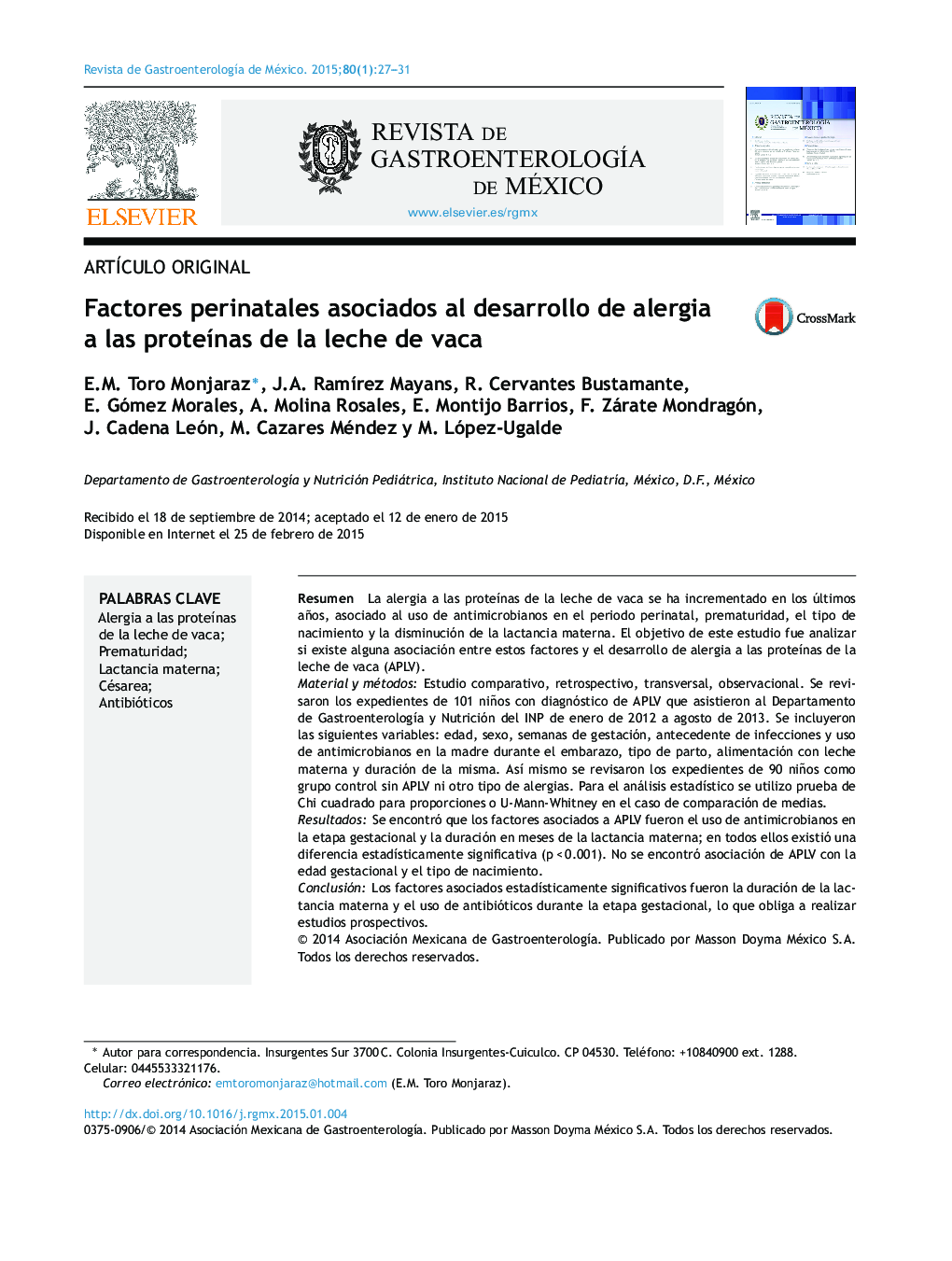| Article ID | Journal | Published Year | Pages | File Type |
|---|---|---|---|---|
| 3318739 | Revista de Gastroenterología de México | 2015 | 5 Pages |
ResumenLa alergia a las proteínas de la leche de vaca se ha incrementado en los últimos años, asociado al uso de antimicrobianos en el periodo perinatal, prematuridad, el tipo de nacimiento y la disminución de la lactancia materna. El objetivo de este estudio fue analizar si existe alguna asociación entre estos factores y el desarrollo de alergia a las proteínas de la leche de vaca (APLV).Material y métodosEstudio comparativo, retrospectivo, transversal, observacional. Se revisaron los expedientes de 101 niños con diagnóstico de APLV que asistieron al Departamento de Gastroenterología y Nutrición del INP de enero de 2012 a agosto de 2013. Se incluyeron las siguientes variables: edad, sexo, semanas de gestación, antecedente de infecciones y uso de antimicrobianos en la madre durante el embarazo, tipo de parto, alimentación con leche materna y duración de la misma. Así mismo se revisaron los expedientes de 90 niños como grupo control sin APLV ni otro tipo de alergias. Para el análisis estadístico se utilizo prueba de Chi cuadrado para proporciones o U-Mann-Whitney en el caso de comparación de medias.ResultadosSe encontró que los factores asociados a APLV fueron el uso de antimicrobianos en la etapa gestacional y la duración en meses de la lactancia materna; en todos ellos existió una diferencia estadísticamente significativa (p < 0.001). No se encontró asociación de APLV con la edad gestacional y el tipo de nacimiento.ConclusiónLos factores asociados estadísticamente significativos fueron la duración de la lactancia materna y el uso de antibióticos durante la etapa gestacional, lo que obliga a realizar estudios prospectivos.
The prevalence of cow's milk protein allergy (CMPA) has increased in recent years, and is associated with antimicrobial use during the perinatal period, prematurity, the type of childbirth, and the decrease in breastfeeding. The aim of this study was to analyze whether there is any association between these factors and the development of CMPA.Material and methodsA retrospective, comparative, cross-sectional, observational study was conducted by reviewing the case records of 101 children diagnosed with CMPA and seen at the Department of Gastroenterology and Nutrition of the Instituto Nacional de Pediatría within the time frame of January 2012 and August 2013. The following variables were included: age, sex, weeks of gestation, history of maternal infection and antimicrobial use during the pregnancy, type of delivery, and feeding with human milk, and its duration. Likewise, the case records of 90 children were reviewed as a control group on not having CMPA or any other allergy. The chi-square test was used for proportions, and the Mann-Whitney U test was used for comparing means in the statistical analysis.ResultsThe factors associated with CMPA were the use of antimicrobials during gestation and breastfeeding duration in months. Both factors were statistically significant (P < .001). No association was found between CMPA and gestational age or type of delivery.ConclusionsThe statistically significant associated factors were breastfeeding duration and the use of antimicrobials during the gestational stage. These results underline the necessity for prospective studies.
